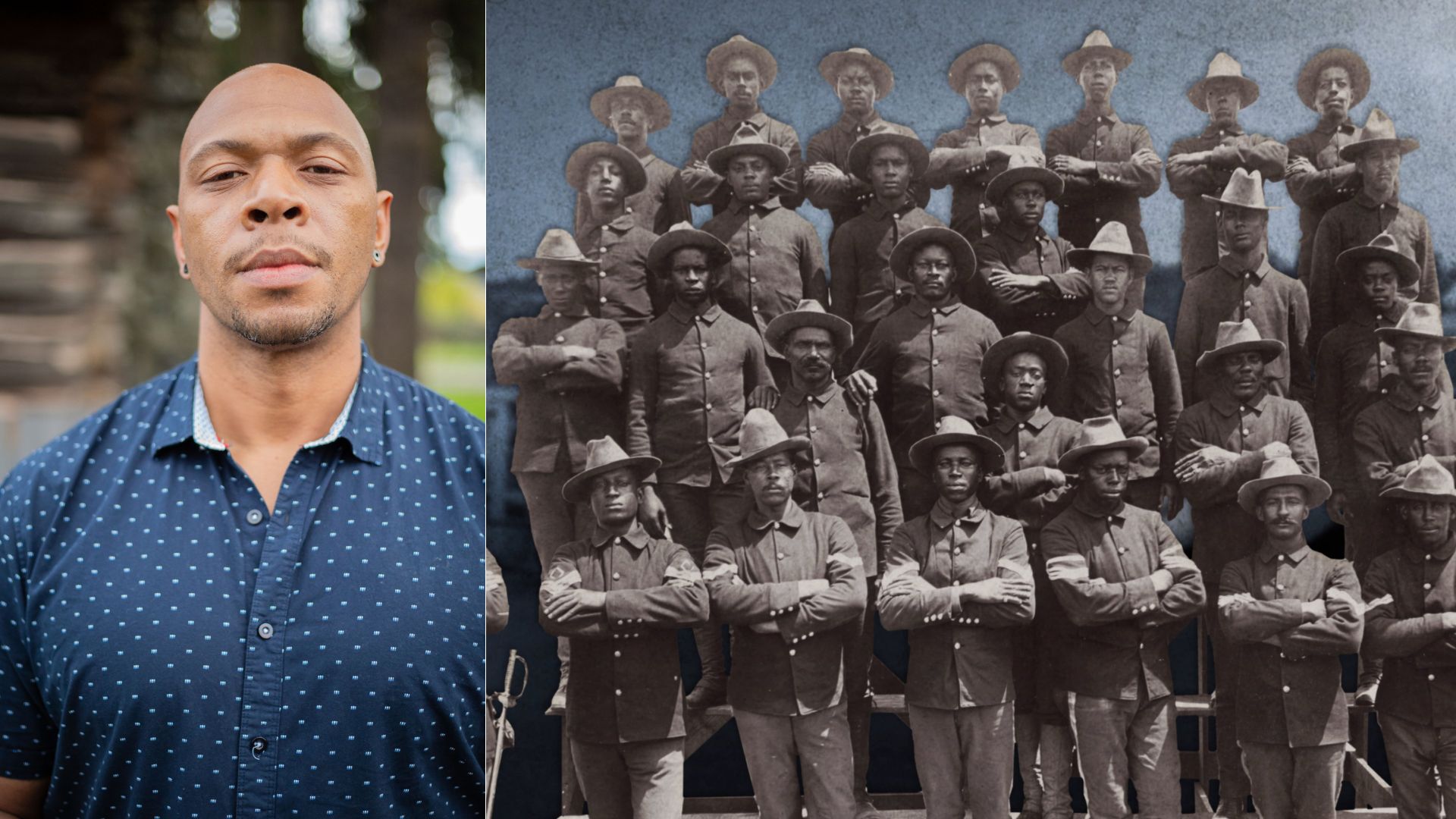America’s history is long, fraught and complex, and its representation, or lack thereof, of Black Americans is even more so. In the feature-length documentary Buffalo Soldiers: Fighting on Two Fronts, filmmaker Dru Holley pieces together the nearly forgotten story and often contradictory role of the U.S. Army’s all-Black regiments, established by the Reorganization Act of 1866.
What began as a project to celebrate Black joy became an exercise in education for the director-producer, who has striven to create a film that tells the truth – even when it’s difficult.
“I'm not the hider of history; I'm the teller,” Holley said. “I'm a storyteller, and I'm passing on the history. That's all I can do.”
Holley spoke with WORLD about his journey from conception to film and how we all can rethink our learned perspectives of American history.
WORLD: What inspired you to make "Buffalo Soldiers: Fighting on Two Fronts"?
Dru Holley: In 2018, I was volunteering at the Juneteenth Festival in Seattle for the Langston Hughes Foundation. At the time, Juneteenth wasn't well attended, so we wanted to promote it to get people back out and excited for Juneteenth.
I brought my 6-year-old daughter and captured some footage while she checked out the festival. After a while, I heard her say, “Oh, horsies!” When I looked up from the camera, I saw these brothers straight out of the 19th century West galloping up the hill on horseback. And my daughter asked me, “Who are they, Daddy?” I couldn't for the life of me remember who these gentlemen were depicting. I was a little sad that I had forgotten this history, and that my daughter probably wasn't going to be taught it. So, I set out on the journey to make this project.
Five years later, my daughter now knows what a Buffalo Soldier is.
W: How did the project evolve from this moment?
DH: My film was first named "Buffalo Soldiers of the Pacific Northwest." Moses Williams was buried at Vancouver Post Cemetery, which was right down the street from me – I passed his grave going in and off the highway. It was his story, the story that led Black men and women to the Pacific Northwest, but we realized that the film couldn't just center around the Pacific Northwest. Though I thought this was [such] a rich history to tell, it would leave a majority of the story out.
“How do we tell this 100-year long journey of countless Black men and a couple of Black women in one hour?” We use Moses Williams as the connective tissue to the West – he takes us to how Black men were recruited in the South and [how they] were involved in the Indian Wars and everything that went along with it. We use Charles Young's story, who took a completely different path than Williams – he went through all the trials of being the third Black man at West Point. Moses Williams is the beginning of the Buffalo Soldier story, and Charles Young helps end the Buffalo Soldier story as America heads out to build their empire in places like Guam and Puerto Rico and become involved in the Spanish-American War.
Not only are these patriots fighting for America and their expansion, but they're also fighting Jim Crow [laws] and civil rights here at home. So, the [title] "Fighting on Two Fronts" came very organically and naturally.
W: What does your film say about how history is told and passed down in the U.S.?
DH: You can't take history at face value. That picture with Teddy Roosevelt and his Rough Riders behind him is cropped – if you expand that image out, you'll see the Buffalo Soldiers, who really took [San Juan] Hill. The Rough Riders came well after the 9th and 10th cavalries had already taken it. That image is what American history has been about: leaving parts out to tell [Roosevelt’s] story. You’ve got to look a bit deeper, even in this film.
I set out to make a promo[tional] film for these amazing Black patriots in history that we have forgotten about. And then you get into the story, and you're like, oh, man. Buffalo Soldiers were involved in the Indian Wars that displaced Native people; that's hard to wrestle with. How do I tell that story? The only way to tell these stories, which might have been skipped in our studies in schools, is to tell the complexities and the truth, to open up conversation and do justice to the history and legacy of not only the Buffalo Soldiers, but our Native American brothers and sisters as well.
I hope this isn’t the first Buffalo Soldiers film – I hope it's not the last. It's a way to pass the baton on to the next storytellers and this history on to our people.
W: What do you hope the audience takes away from your film?
DH: While making this film, I had in mind that we wanted to make this for a younger audience. My daughter is 11 now, and her way of consuming media is TikTok. We wanted to involve the type of music we listened to, fun recreations with Black men on horses. I wanted to make graphic novel-style animation. Hopefully, this is used as a resource for educators, so that people can't in the future say, “Why didn't they teach us this in school?” We now have something that we can show students.
These brave patriots, Black men and women, sacrificed for their country and continue to sacrifice for their country. This is our country; this is Black history, but this is American history.
Watch this full interview with Dru Holley on YouTube:
Buffalo Soldiers: Fighting on Two Fronts is now streaming on the PBS app, Apple TV+ and Prime Video.
Discuss and engage with us on Facebook, Instagram, Twitter and TikTok by using the hashtag #BuffaloSoldiersPBS and tagging us @worldchannel. Subscribe to our newsletter and YouTube for more features including events and interviews.
Enjoy our content? Consider donating to keep important storytelling like this going, and find more on PBS Passport.




